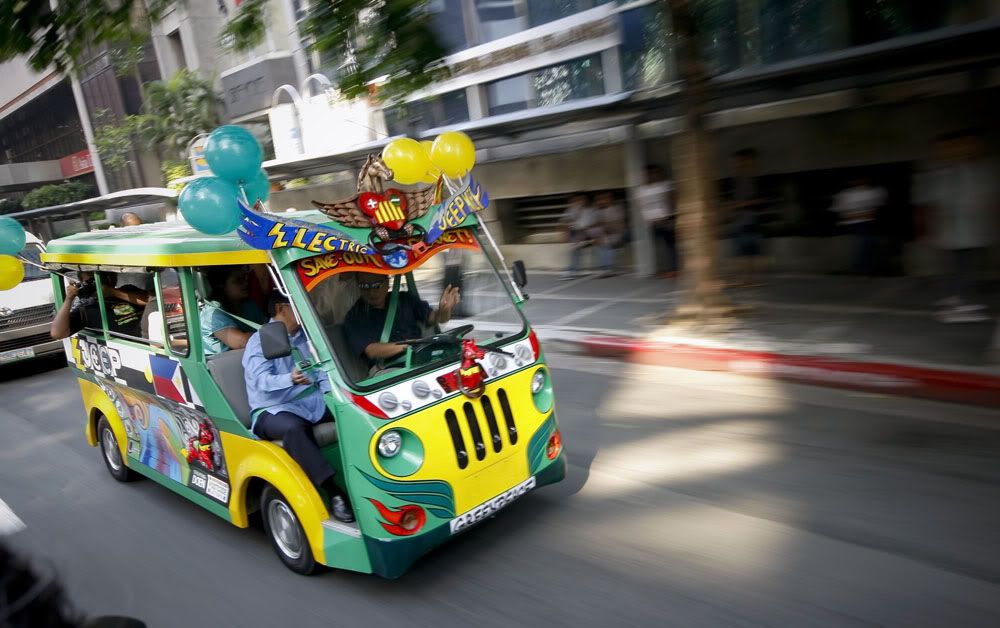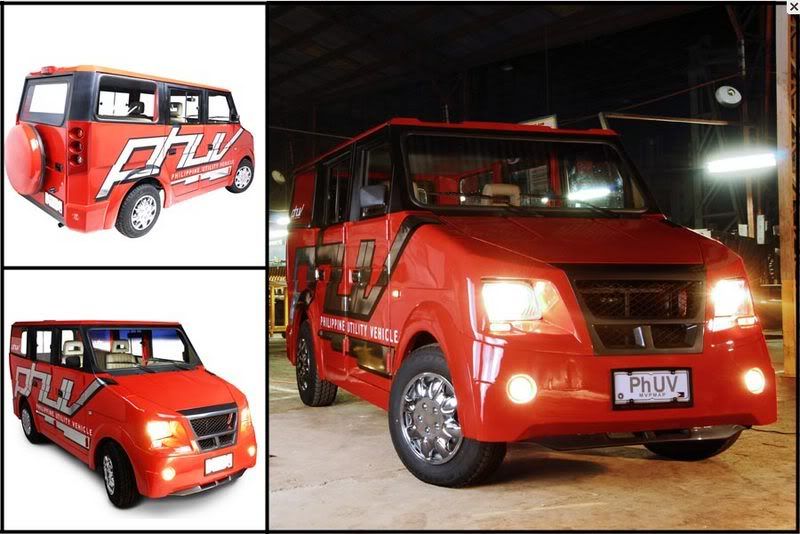Results 1 to 10 of 153
Hybrid View
-
August 14th, 2009 10:04 AM #1Working for the development of a new type of jeepneys[SIZE=3]PHUV, Inc.[/SIZE]
[SIZE=4]MVPMAP[/SIZE] on the other hand, through [SIZE=4]PhUV Inc.[/SIZE], is fortifying its position as the pioneering organization that will not only help rekindle the Philippine auto manufacturing industry but will also push for sustainable and environment-friendly communities.
"This advocacy started when we locally designed in 2006 and developed in 2007 the Philippine Utility Vehicle (PhUV) to prove that given the opportunity and the resources, the Pinoy engineer can design and build a truly Pinoy vehicle.
The PhUV Program has been in the Investment Priority Plan (IPP) of the Board of Investments since 2007.
This e-jeepney is just a reincarnation of the PhUV as a pioneering endeavor under the IPP", Mr. Raquelsantos says.
MVPMAP members are excited to supply their locally-assembled parts to both the e-jeepneys and the e-trikes for its forthcoming mass production.
"This will ensure the availability of after-sales parts and service for the vehicle. Even Pres. Arroyo has shown much interest in the electric vehicle program when we and our Chinese partners presented this to her in China.
Things are looking brighter and this we hope will finally put the Philippines at the forefront of electric vehicle development in this part of the globe", he concludes.
PhUV Inc. is the first to locally design, fabricate, assemble and actually put on the road a locally-assembled electric vehicle, the e-jeepney.

The Logo of MVPMAP
Source: Press Release, December 2008, Enterprise

-
-
August 14th, 2009 10:14 AM #3
E-jeepneys of PHUV, Inc.

courtesy of Greenpeace southeast asia
The LTO will issue orange plates for these environment-friendly vehicles which are now classified as low speed vehicles with a maximum speed of 60 kilometers per hour.
E-jeepneys cost 625,000 pesos a unit, while reconditioned diesel engine jeepneys cost from 700,000 to 800,000 pesos, depending on how many passengers it can carry.
From Trapik.com posted 3/2009
-
August 14th, 2009 10:29 AM #4
First things first. Find a production method which would give finished vehicles curves. What is the point of trying to push PHUV if all you will produce are vehicles which look like cardboard boxes on wheels?

-
-
August 14th, 2009 10:56 AM #6
-
 Tsikot Member
Tsikot Member

- Join Date
- Dec 2012
- Posts
- 3
February 10th, 2013 02:11 PM #7hi po sa lahat regarding po sa PHUV pwede po ako makatulong sa pamamagitan ng aking desenyo pki bisita nalang po ang aking facebook mrt3tech*yahoo.com at lahat po ng aking mga desenyo gaya ng mobile food kart na pang palit s jollijeep , concept aero dynamic passenger jeepney .. maraming salamat po God bless po sa lahat..(*_-)wink
-
March 5th, 2013 11:56 PM #8
*creativepinoy,
Welcome to Tsikot. Sayang you weren't around in 2007 when there was a design crowdsourcing in Tsikot.
In 2007, the MVPMAP PhUV was introduced but its style was controversial.

A group effort by Tsikot members to redesign the PhUV produced three concepts: X, Y and Z.
This is Y:

Last edited by donbuggy; March 6th, 2013 at 12:01 AM.
-
March 27th, 2013 09:02 AM #9
-
March 27th, 2013 09:35 AM #10
Particularly with the Chinese starting local assembly.
Well, at least they're doing some sort of assembly (SKD, I think)... many of those who lobbied to have Subic and Port Irene imports have not increased local production at all.
Ang pagbalik ng comeback...






 Reply With Quote
Reply With Quote








As expected, in response to Tesla’s entry into the Philippines market, Ford will be bringing in the...
Tesla Philippines